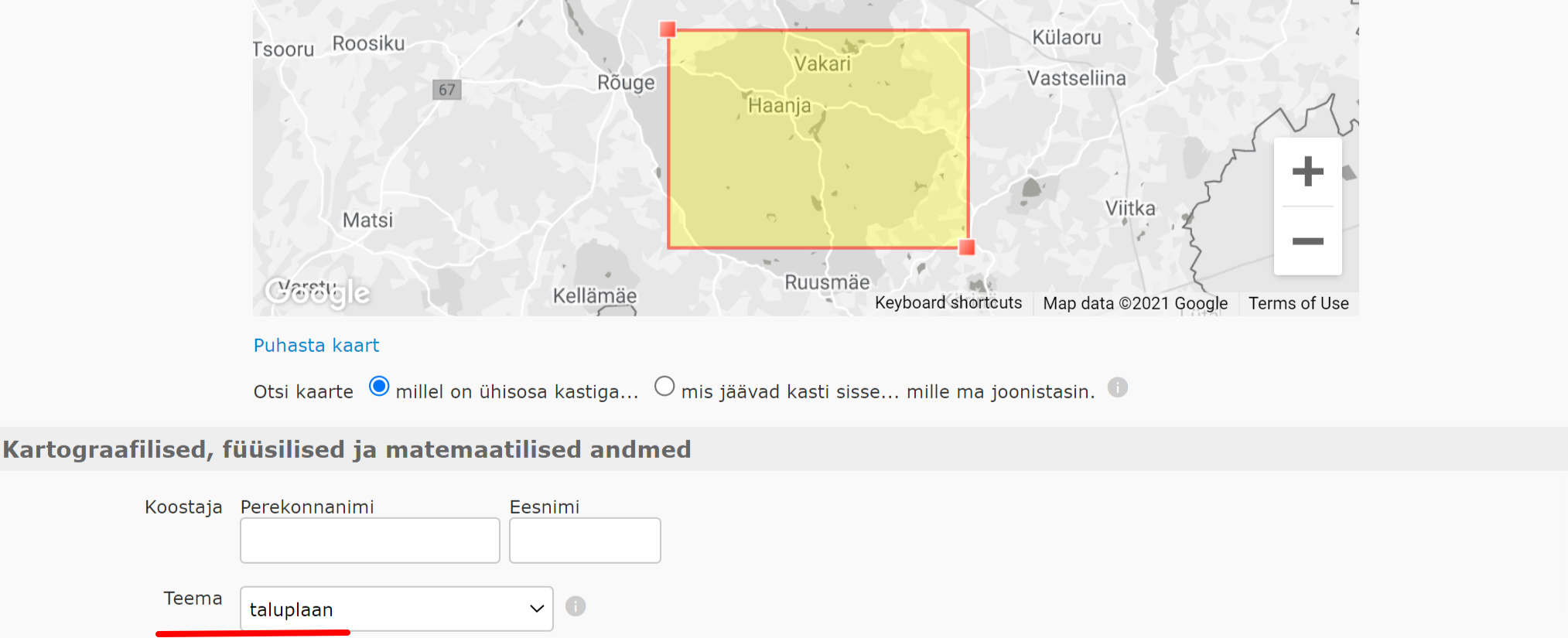Search Features
Manor and rural municipality
Manor is the archivally most precisely defined unit, searching by which one has hope to reach the desired result most quickly. It is advisable to search by manor not only to find maps of the manor centres or manor hearts and manorial lands, but to find maps of the villages and farmsteads belonging under the manors as well. Starting from 1918, rural municipality (civil parish) is the unit with similar meaning.
Simple search by title
Since this concerns historic maps, it is definitely worth trying to search not only by the Estonian names but also by their German and Russian equivalents (e.g. in case of Alatskivi: Allatzkiwwi and Алaцкиви) and different orthographic variants.

Simple search by place name
If you use the place names search, you do not have to reckon with foreign language names and orthographic variants any more. But you have to consider that the results of this search are independent of the type of unit.

Advanced search > Search from hierarchy
Enables to find the desired unit in the fastest and most convenient way. For instance, if you search by the manor of Kaarli then all hierarchy units from the different periods in which this place name occurs, will be displayed. It appears that a manor with this name is in several different parishes. Additionally there are also villages, village soviets and rural municipalities with this name from different periods. The search from hierarchy makes it possible to choose the right unit already in the beginning, without needing to browse a large amount of search results where maps of all kinds of units with the same name are mixed up.

Village and farmstead
Village is brought out as a separate level in the hierarchy not until the administrative division of 1991, earlier village maps should be searched by the higher unit, manor. It is advisable to search even for farmsteads via manors (Estonia until 1917) or rural municipalities (Estonia 1917–1950) because all farmstead maps in the register are connected with the manors from which lands they were separated, or with the rural municipalities under which they belonged in 1918–l940. Besides, there are many farmsteads with the same name all over Estonia and it might not be easy to find the right one among them.
You can use the following possibilities to search for a farmstead.
Simple search by title
Since this concerns historic maps, it is definitely worth trying to search not only by the Estonian names but also by their German and Russian equivalents and different orthographic variants, e.g. Kravi, Krawi and Краави when looking for the farmstead of Kraavi.

Advanced search > Place on the map
If you know the location of the village or farmstead in question but you do not know the name of the manor which it is connected with, then you could also try the geosearch. It is recommended to use geosearch together with other search parameters. For instance, when looking for a farmstead map from the 20th century, mark the approximate search territory and search for maps with the theme "farmstead map". But you have to consider that such a restricted search does not give an exhaustive result.

Advanced search > Specified place
The search enables to make enquiries among more specified place definitions (entered as free text) than the levels of rural municipality, manor or town. There are mostly village, farmstead, city district and street names, but also river and lake names and other microtoponymic names, entered as free text. In case of farmsteads and town lots, there are also real estate numbers.
